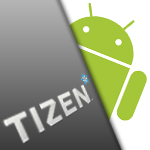 The Korean mobile device maker Samsung has its lineup heavily dominated by Android. But when a change is necessary, the choice lands on Tizen. The open-source OS that already powers Samsung's cameras and Gear wearables, is now is finally on a phone.
The Korean mobile device maker Samsung has its lineup heavily dominated by Android. But when a change is necessary, the choice lands on Tizen. The open-source OS that already powers Samsung's cameras and Gear wearables, is now is finally on a phone.
The Samsung Z is the first Tizen smartphone, representing the third OS that the company use beside Google's Android and Microsoft's Windows Phone. Samsung Z is a "premium device" according to the company, but the specifications are fairly average: a 2GB RAM, 4.8" 720p AMOLED display, a 2.3GHz quad-core processor, and an 8-megapixel camera. But it shares a similar feature owned by the Galaxy S5: a fingerprint sensor.
Many people wondered why the Samsung chose Tizen and not other mobile OS. The company said that the open-source OS delivers "a fast, optimal performance with improved memory management" along with "a faster startup time and immediate multitasking capabilities." Samsung also praises Tizen's web rendering and scrolling performance. However, the Z as an early smartphone with Tizen, won't have the access to the already massive Android's ecosystem. And if comparing with the Galaxy series, the Z don't have the interface design that pushes the boundaries of smartphone and OS technology.

Samsung has worked hard to incorporate parts of its Android design language, particularly in the apps drawer, notification tray and home screen widgets, with its own TouchWiz interface. Not only do they look better, each of these elements are more feature rich than before, offering users a greater control over their device. Samsung insists that Tizen isn't designed to replace Android, affirming that adopting Tizen is it's way to apply a "multi-OS strategy."
But Samsung's bet by giving its recent wearable devices operated by Tizen, can open a new way for the Korean company to counterstrike against Google in its quest to go up the food chain. And with Tizen still young and Samsung's wide range of electronic devices, the possibility is limitless.
Before making its way to Tizen, Samsung first attempt to break its dependencies from other software makers was using Bada. At that time, Samsung has no other choice because the mobile device market was already been captured by the first generation of iPhone. And at that time, Samsung's choice was to use Microsoft's Windows Phone that was not popular, or Android that was still under development. Samsung chose Android and released it's first Android smartphone, the I7500, in April 2009.
With its first Android smartphone on the market, Samsung continued to rush Bada's development to compete with Apple's iOS and it's own software provider, Google. The company then released its first Bada smartphone, the Wave S8500, at Mobile World Congress 2010 in Barcelona in February 2010. But iOS that has been developed for five years prior to its release got an upper hand against Bada.
Samsung acknowledged this, and continued to depend on Android. Eventually, with Google's massive resources, Android is able to compete with the more mature iOS. With Android, Samsung was able to take Nokia's first place position, and became the most popular smartphone maker in the world.
Despite its success, Samsung apparently still want to be independent. By adopting Android, Samsung is heavily dependent on Google and its resources. in 2013 Samsung merged its homegrown Bada project into Tizen, and released its first product: Samsung's NX300M smart camera. It was soon followed by Systena by releasing the first Tizen powered tablet. And these was followed by Samsung's wearables and the Z.
Why is Samsung is so eager to be independent? Why is Samsung is so keen to offer an alternative to Android, the software that has made it the biggest phone manufacturer in the world? The answer is because every Android phone Samsung sells is a funnel that takes a portion of the money and channels it into Google's pocket.
Samsung wants a piece of that action. As a big company with also massive resources, Samsung is confident that it can create its own alternative. And because Tizen phones don't pay to Google, they're cheaper for Samsung to sell and are thus perfect for developing markets, where phones need to be cheaper to compete.
And with Android conquering most of the current lower segment market, The independent Samsung with Tizen can peel away portions of Google's market, climbing up the food chain.
To make that happen, Samsung isn't betting on Tizen without careful planning. For not having the same mistake it did with Bada, this time Samsung came well prepared. It's origin stretch back to 2007 with Linux Mobile (Limo) where Samsung was a founding member prior to being renamed Tizen in 2011. Intel later joined its list of supporters after leaving the MeeGo project. Then came Sprint Corporation, Vodaphone, NTT DoCoMo, Orange S.A, KT Corporation and SK Telecom. Tizen since then was open-sourced so developers can test it (Systena was one of them) and Samsung carefully control it via a proprietary SDK.
With big supporters and the information it needs, Samsung launched its own Tizen wearables. No other mobile platform has ever received so much testing prior to Samsung Z.
However, Samsung's bet on Bada in 2008 was less risky. The company had little to lose because that time: Samsung had only 4 percent of the global smartphone market. Tablets were still out of the radar, let alone its wearables. But in 2014, things have changed. Samsung's bet on its own Tizen software pose a lot bigger risk for the company's well-being on the market.